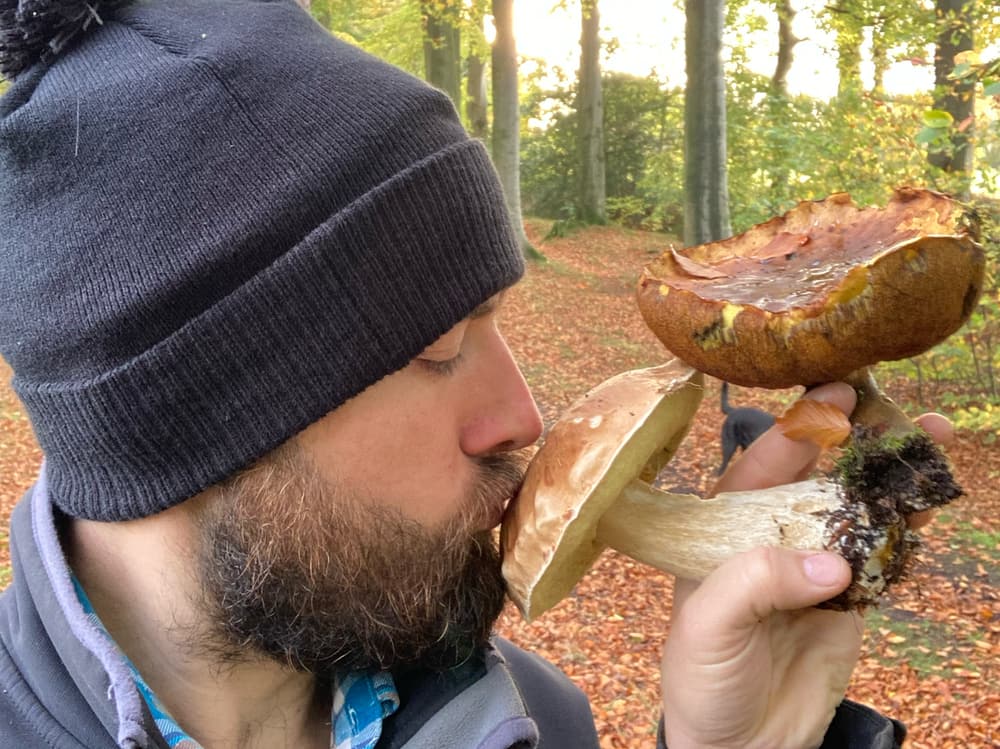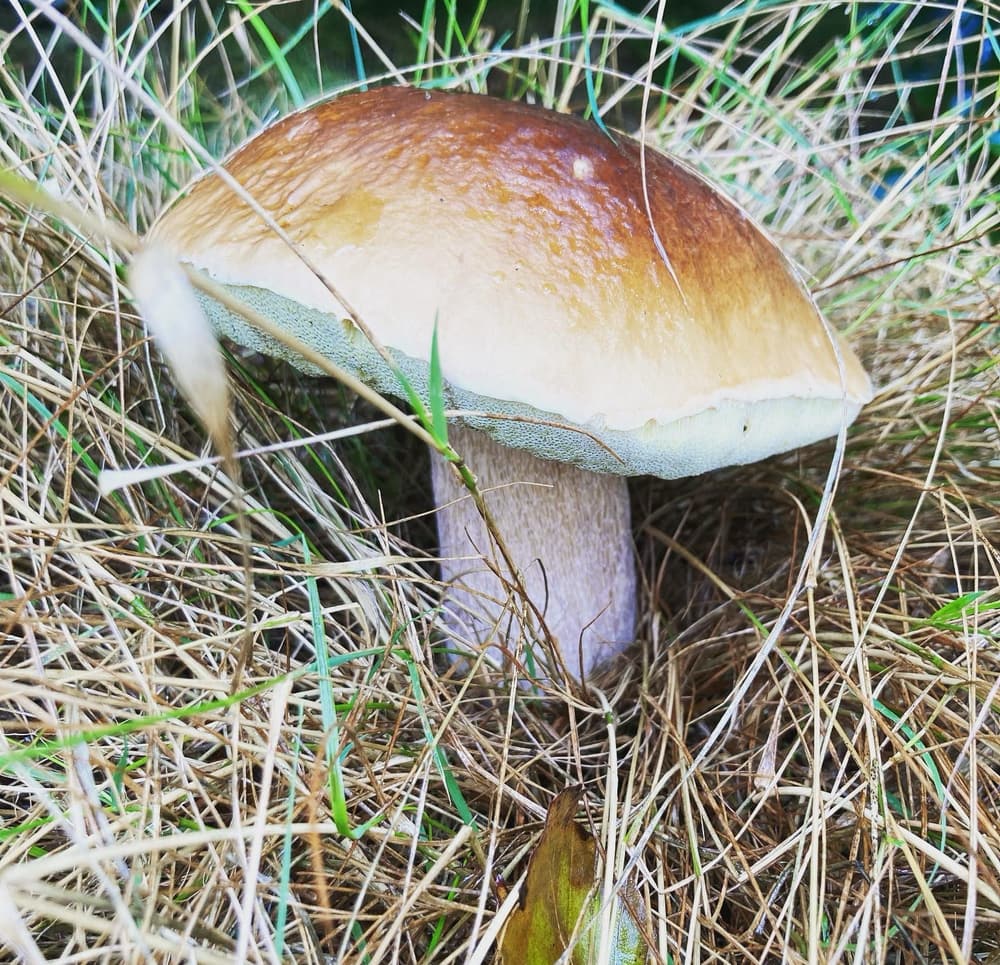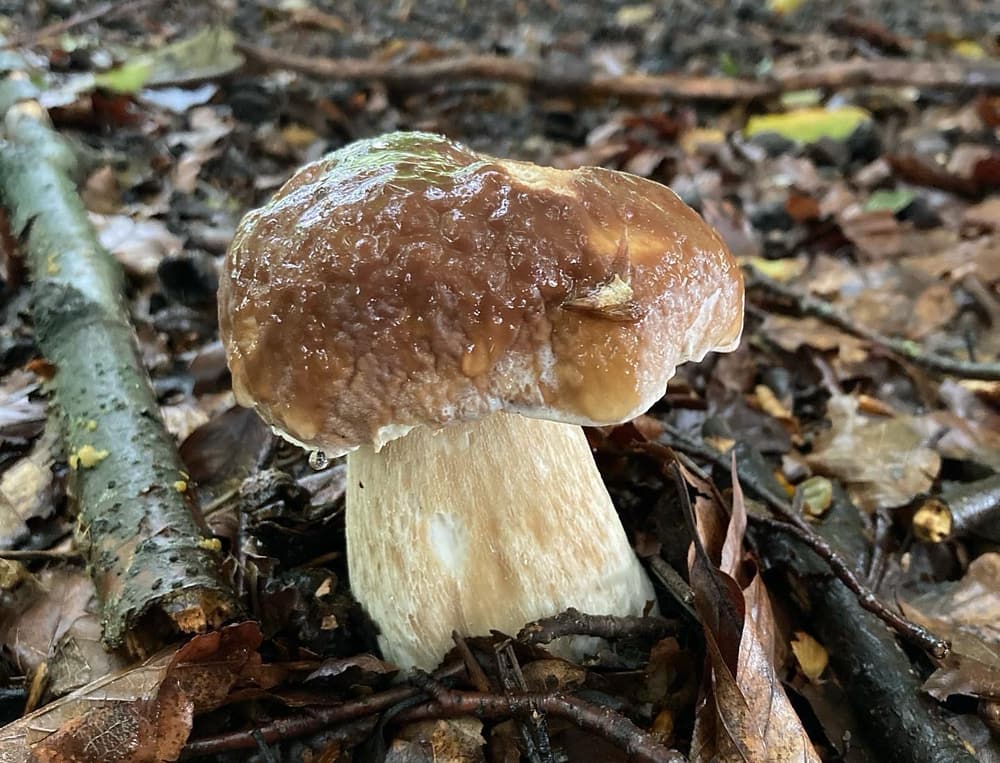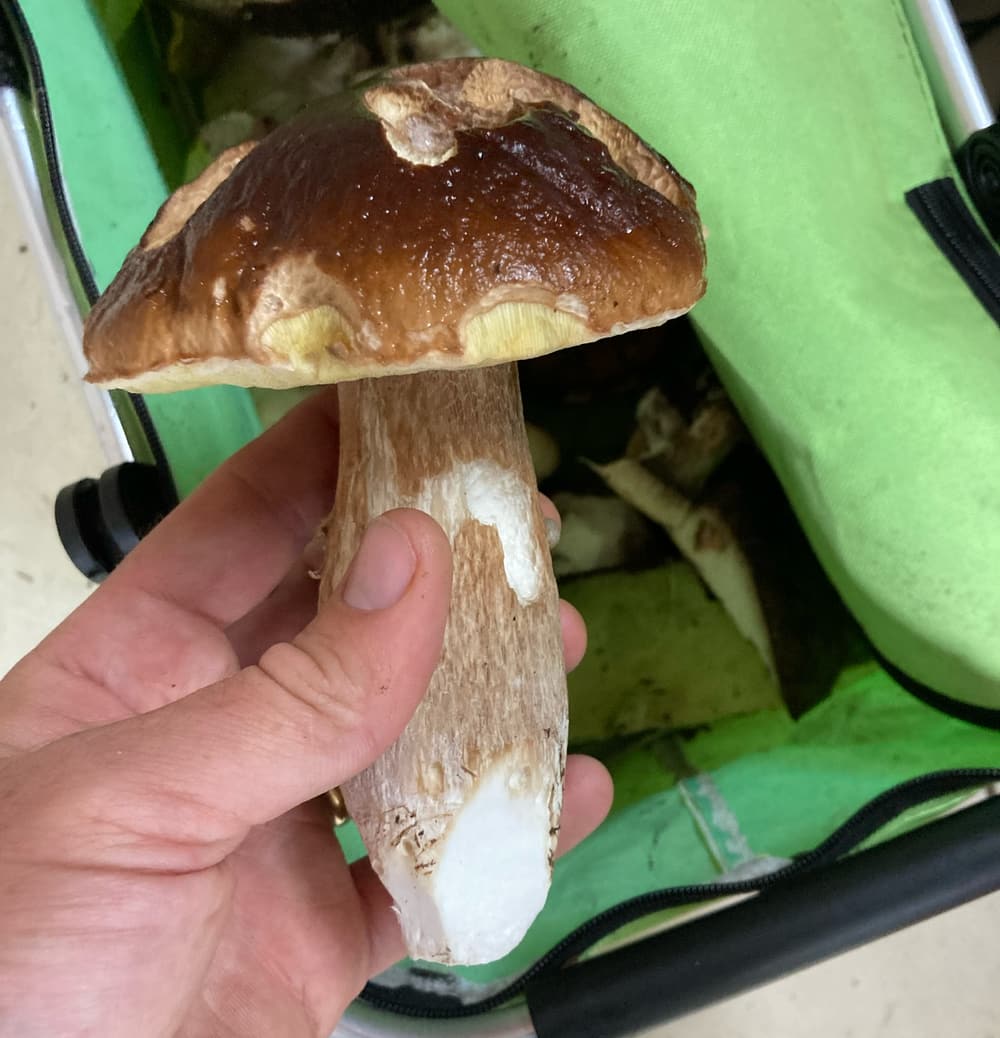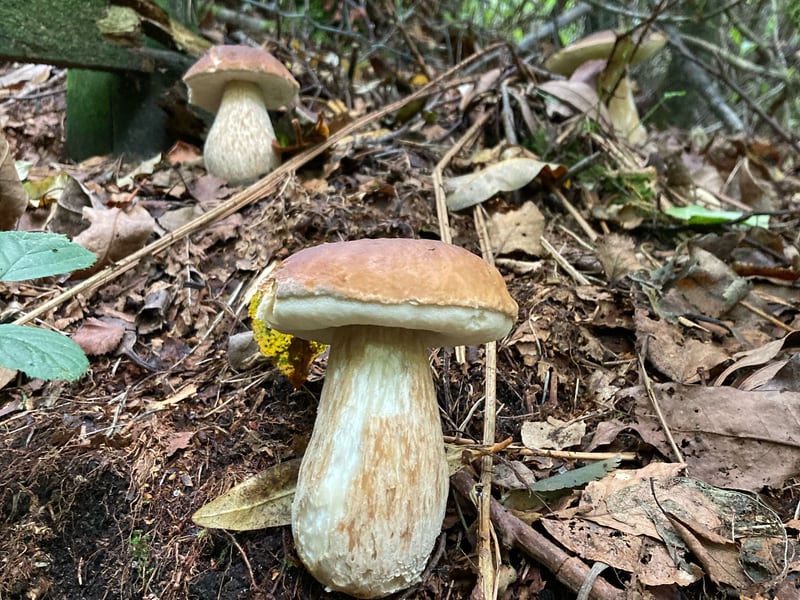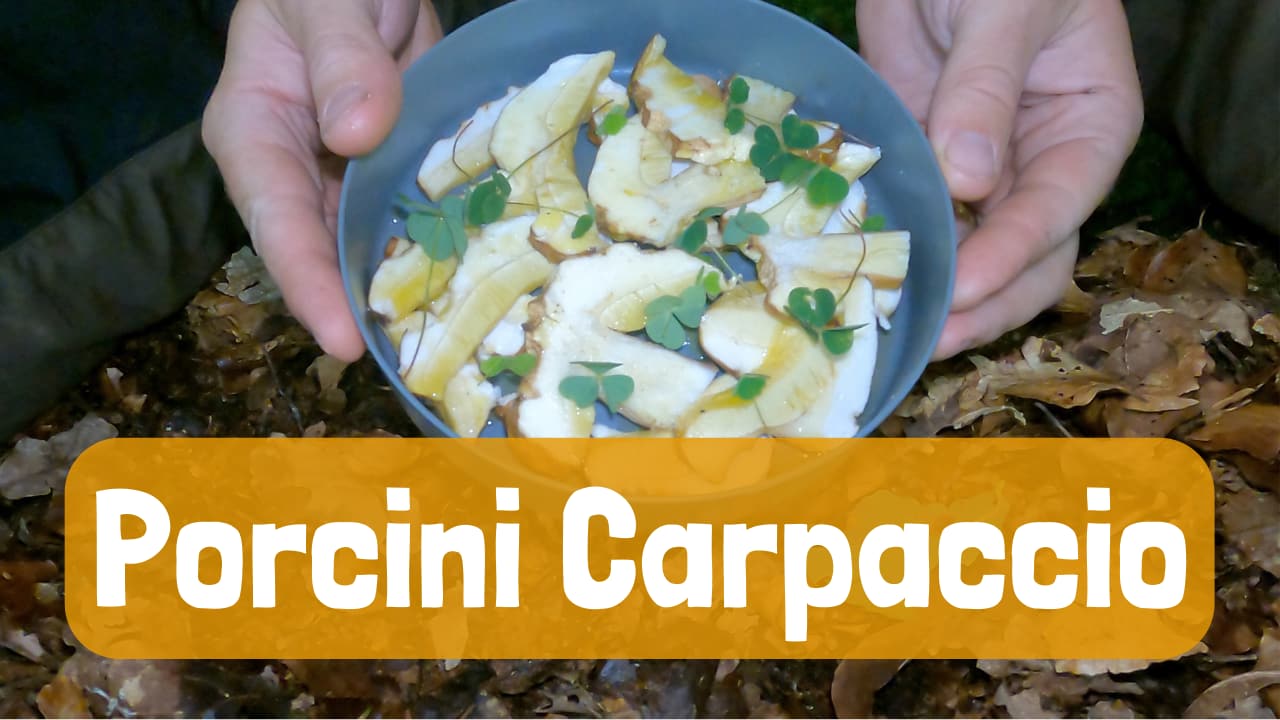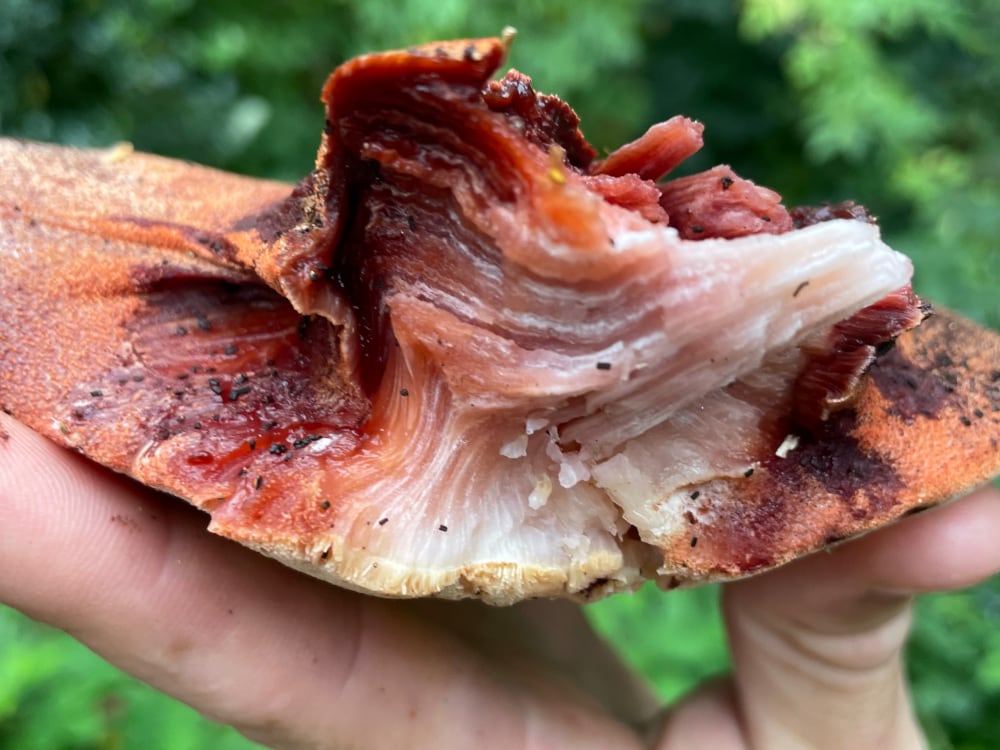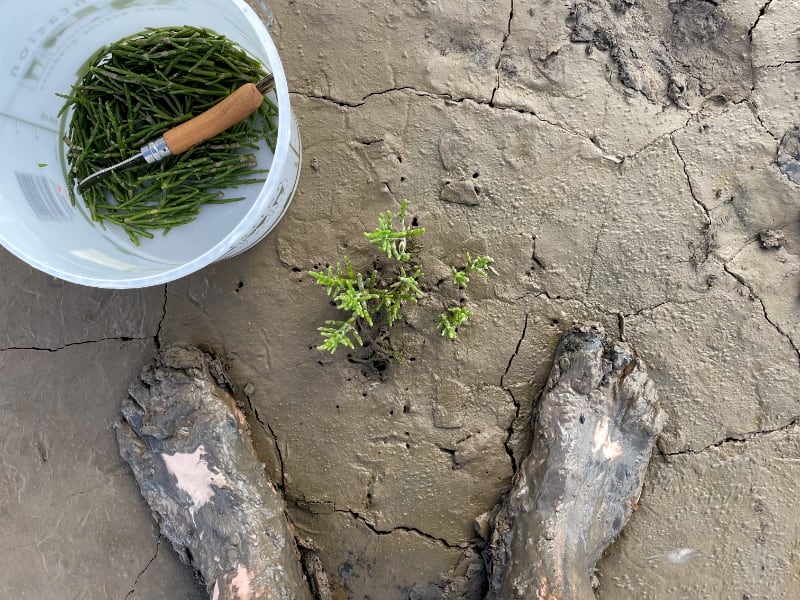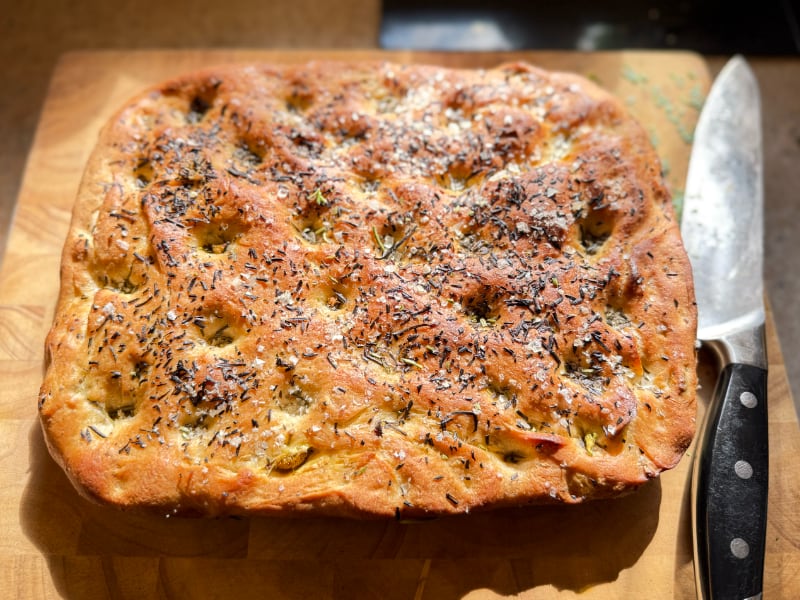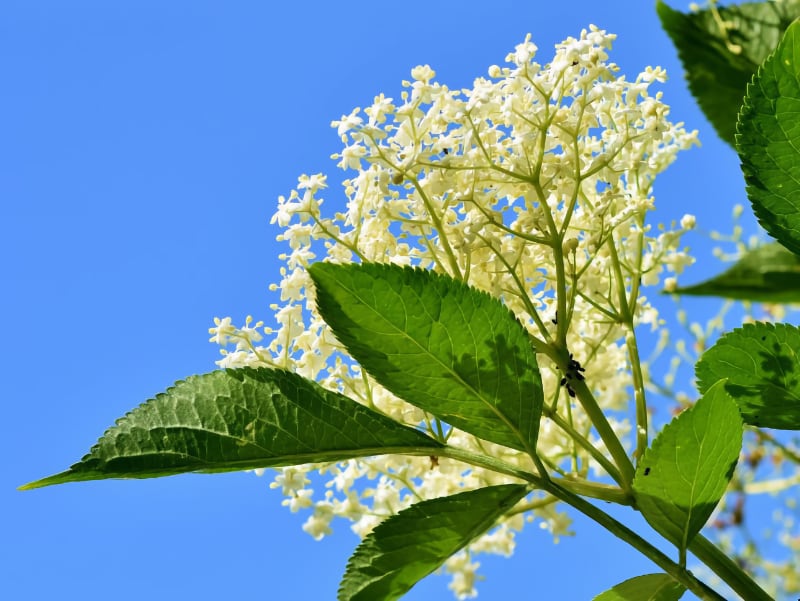I find that most people who attend my foraging workshops do so with their excitement levels through the roof but confidence to start their wild adventure a little more grounded. It is no surprise why, of course – there are plenty of things you could eat that would do you some harm, but people are far more preoccupied with what something could be than what it actually is. In other words, they are far more concerned with getting it wrong than the joy and reward of getting it right.
This is even more apparent when mushroom season rolls around. Whilst you are far more likely to eat a poisonous plant*, they are ubiquitous and our familiarity is therefore greater. We generally know what common plants look like, even if we don’t know their name or edibility status. Mushrooms, on the other hand, are like little aliens that pop up in much smaller numbers, often without fanfare and therefore may go unnoticed to those who are not looking for them. Familiarity breeds confidence in this instance and it is therefore unsurprising that people are far more nervous about mushroom foraging than they are about gathering plants for the pot.
So how might one start foraging for mushrooms? Well, there are a number of ways to do so. My best suggestion is to treat it like learning a foreign language: learn the polite basics, work out the grammar, fill in the gaps, become more fluent through exposure. You would never consider learning a language by opening a dictionary, so avoid being intimidated (and bored! Fungi guides can be very dry documents!) by pages that don’t convey the hands-on experience of foraging for fungi. Instead, look to nail a few key beginner species before moving onto the trickier ones. You will actually find that a lot of mushrooms that might technically be edible start to lose their shine when you realise that only a very select handful of species are worth picking or are available in decent enough numbers to warrant your attention (I am particularly partial to a mushroom known as the ‘deer shield’ but it doesn’t get much credit as an edible mushroom as it only pops up individually and seldom grows large enough to go beyond being included as a small addition to breakfast).
Here are some tips for the budding fungi forager:
- Learn your common species. Mushroom guides are the best place to learn your stuff, but they do not reflect how frequently you will find certain species. Distinguishing the common ones from the less common ones might only be done so in these guides through a simple wording choice, but the practical reality of a wander through an autumn wood will soon show you how ‘very common’ compares to ‘locally scarce’
- Practice! Be as familiar with the wild mushrooms and plants that you are going to eat as the ones in the supermarket. You never need to read the labels of carrots, onions, bananas or apples because you instinctively know what they are. That’s the same level of exposure-based familiarity you need to apply to any wild food you plan to consume.
- Break your fungi into families. Just like flora and fauna, fungi are grouped into families (AKA the genus). Some are easy-peasy, some are a bit tricky. Some (rather helpfully) such as the webcap family, can be dismissed entirely in your quest for edible mushrooms due to all being toxic.
- Book onto a foraging workshop! Obviously I have skin in the game here, but there really is nothing like the safety net of an expert foraging guide to give you the nudge to pick mushrooms for yourself. You can book onto a Forage Box workshop here – they take place all over the country!
- Learn to take spore prints and apply jargon. Once you have enjoyed finding the very simple fungi that I have mentioned below, your knowledge will rapidly expand if you get to grips with spore prints, gill attachments, the ‘yes/no’ decision tree of ID-ing fungi and all associated jargon.
- Look for knowledge, not answers. Whilst sounding like advice you would receive in a fortune cookie, you are far better off in the long-term trying to learn this stuff for yourself rather than asking an app (which can be a terrible idea) or blindly asking a Facebook mushroom group or similar to identify something you took a grainy photo of growing in your lawn.
- Pick safely, legally, sustainably and ethically at all times.
Below are some ‘beginner’ mushrooms that are easy to find, simple enough to identify and are useful in the kitchen. You will notice I have not included too much in the way of ID tips, such is the need for you to do your own research first.
Jelly ear – reliably around after a bit of wet weather and almost always found on dead/dying elder trees. I used to call this the ‘easiest wild mushroom to ID and eat’
.
Chicken of the woods – a Facebook foraging group favourite. In my more mischievous era, I got a warning from one such group for posting a picture of some expanding foam and asking if I had found chicken of the woods after seeing so many similar posts with a clear lack of any attempt to do their own research. Its likeness to bright yellow expanding foam shouldn’t be understated though. Its comparison to chicken perhaps should.
Porcini and other boletes – a great family to start with and one you can apply the safety net rule of ‘red and blue will make you spew’ . Some choice edibles might slip through that net but at least you won’t be eating something that locks you in the bathroom for the next few days.
Shaggy inkcap – another perfect example of how foraging can unlock exclusive flavours not found in the shops. This mushroom is delicious (I often use it as vegan squid) but with absolutely no shelf life whatsoever: you need to be enjoying this for your next meal before it rapidly deliquesces to the black ink it is more famous for.
Chanterelle – other than the porcini, probably one that garners more commercial interest than any other mushroom. Don’t be fooled by mention of the ‘false chanterelle’ – these share an orange-yellow colour on the cap and suffix only, and can be easily distinguished by many other ID features.
Hedgehog fungus – named for the spines it has under its cap, rather than gills or pores. A gourmet mushroom that yearns for cream and garlic.
Scarlet elf cups – not likely to be found in autumn, but if you are finding red, cup-shaped mushrooms in early spring, you really aren’t going to be confusing this with anything else.
*around a half of the world’s 400,000 or so plants are edible in some way, with the other half being not so edible. Compare that to around approximately 250 or so of the UK’s 15,000 mushrooms that could do you some harm and the odds of eating a poisonous mushroom is far lower than with plants (don’t eat random mushrooms hoping that the maths is on your side though!)
What to forage this month
Taken from the Forage Box Foraging Calendar 2026 – now available to order.
Himalayan Balsam – an invasive species with edible flowers and seeds
Bilberry – intense native blueberry that fills open moorland
Chanterelle – gorgeous sweet mushroom that can be gathered by the kilogram
Damson – it has been a brilliant year for these rich plums
Beefsteak fungus – steak-like only in appearance and far better used raw as sashimi
Sea buckthorn – mouth-puckeringly tart but with a brilliant passionfruit and grapefruit flavour
Parasol mushroom – certainly getting close to being my favourite mushroom! Found in open meadows
This month’s species in focus: Porcini
I tend not to give much credence to species that can be found in the supermarket as the shine seems to be taken away once the commercial big boys start stocking things. However, porcini (or cep, penny bun and many other names) are always sold dehydrated and consumers therefore miss out on the fresh state, with all the chunky texture and rich flavours that it has to offer. In my previous life as a private chef, I actually once worked for a chap who put me on a plane from London to Paris just to collect some fresh porcini from a man waiting at the airport, such was my rich client’s desire to have fresh porcini for dinner. I did want to point out that, not only is that a colossal waste of air miles, but that if he gave me the afternoon off and a lift to a nearby wood, I could have found him baskets of pristine porcini picked that same day. And that is what my recipe this month focuses on: fresh porcini carpaccio.
Habitat: woods containing beech, birch and pine. Occasionally under oak.
Description: fat stems are the clincher from afar for me, but a closer inspection under the ‘penny bun’ cap will show white-to-yellow (to eventually green/brown) pores. Will not bruise red or blue.
Lookalikes: Other edible members of the bolete family, but please check properly if you plan on eating them raw (many need cooking first)
Picking guide: I like doing a quick ‘tap’ test when selecting porcini to take with me. If it sounds hollow or thick, it is good to go. Any squidginess or dull thudding and I would leave it be for this recipe.
Cooking tips: Dried will work well in risottos or pasta sauces, but a fresh porcini is an exclusive treat for those who take the time to find them for themselves!
Recipe: Porcini Carpaccio
Keep. It. Simple. That is a saying you hear so many chefs say. In this instance, I have done exactly that. Sure, we could go lavish with flavoured oil or other rare herbs, but this is gourmet food at its finest: letting the ingredients do all the work, without the need for fancy techniques or equipment. You will need to make sure your porcini are bug-free and in decent condition for this. Remember to savour every mouthful – this is as good as it gets. Let’s face it too, this is probably
the most middle-class thing you will read today! I actually filmed a video a couple of years back of me making this very same recipe whilst camping out in the woods.
You can watch this video and more by visiting Forage Box TV on YouTube.
Ingredients:
Fresh porcini mushrooms
The best olive oil your budget can stretch to
Sea salt flakes
Optional: herbs such as thyme or parsley
Wild twist: use finely-chopped yarrow or common sorrel instead of the herbs
Equipment:
Sharp knife or mandolin
Method:
- Slice your mushrooms as thinly as you can
- Arrange decoratively on a board or plate
- Drizzle over your olive oil and sprinkle over your salt
- Scatter your herbs across the top as a liberal garnish


